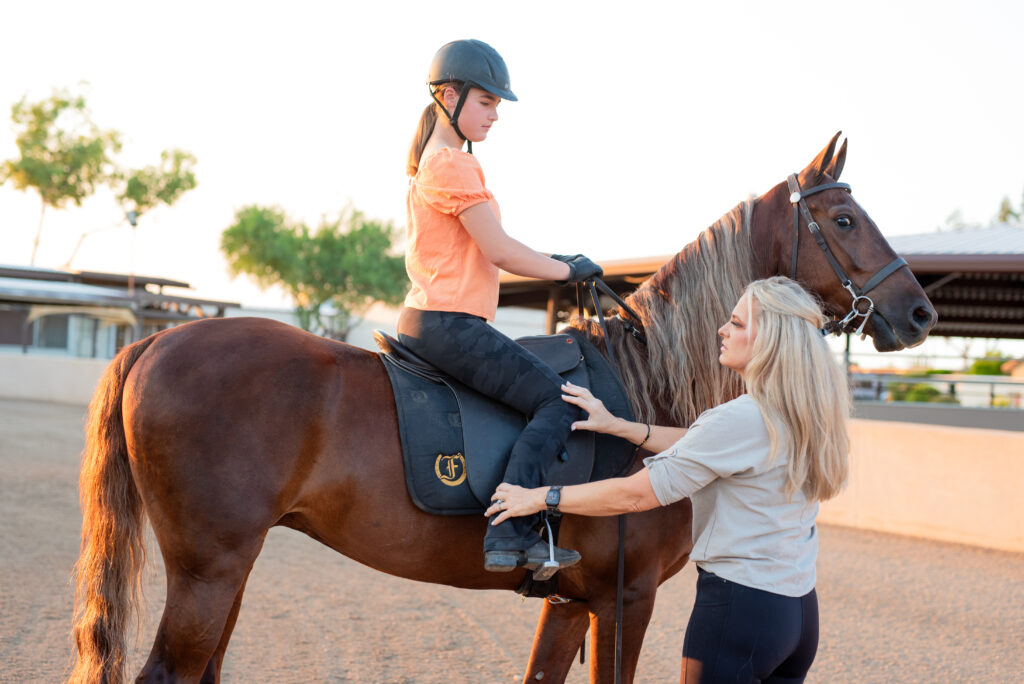julie daniel
equestrian & lifestyle
home
marketing services
about julie
amazon storefront
blog
contact
ride courses
5 Essential Things You Need for a Successful Riding Lesson Program
September 3, 2024

Running a successful riding lesson program requires more than just a love for horses and a knack for teaching. It involves careful planning, strategic decision-making, and a thorough understanding of your business’s needs. Here are five essential elements you need to consider to ensure the success of your riding lesson program.
1. Branding
Branding is a crucial aspect of any business, and your riding lesson program is no exception. Your brand is the first impression potential clients will have of your services. It should convey the unique qualities that set your program apart from others.
Your brand comprises everything from your logo and name to your core values and mission statement. Whether your focus is on competitive training or recreational riding, your brand should reflect this. A strong, consistent brand can help attract your target audience and foster a sense of community among your riders.
2. Liability Insurance and Contracts
Given the nature of horse riding, having liability insurance is essential. This type of insurance protects you and your business from financial loss in the event of an accident or injury during one of your lessons.
In addition to liability insurance, you should also have contracts in place for various aspects of your business. These may include liability waivers, lease agreements for horses, and social media release forms. These contracts are designed to protect both you and your clients, and to ensure everyone is clear about their rights and responsibilities.
3. Social Media Presence and Online Scheduling/Billing Software
In today’s digital world, a strong online presence is key to reaching potential clients. Social media platforms like Instagram, Facebook, and Twitter allow you to showcase your students’ progress, share updates about your program, and engage with your local equestrian community.
Using online scheduling and billing software can streamline your administrative tasks and improve the customer experience. Clients can easily book lessons, make payments, and receive automatic reminders. This not only saves you time but also adds a level of professionalism to your program.
4. Barn Rules and Dress Code
Establishing clear barn rules and a dress code is crucial for maintaining a safe, respectful environment. Barn rules should cover everything from how to interact with the horses to maintaining cleanliness in the stable.
Your dress code should ensure that students come prepared for their lessons. This typically includes riding jodhpurs, proper boots, and ASTM/SEI certified helmets. Clear communication of these rules and dress codes from the start can help prevent any misunderstandings down the line.
5. Well-Kept School Horses and Educated Instructors
The heart of your riding lesson program lies in the quality of your school horses and instructors. Ensure your horses are well-kept, healthy, and suitable for riders of different levels. Regular vet check-ups, proper diet, and adequate exercise are key to maintaining their well-being.
As for instructors, they should be experienced, knowledgeable, and capable of teaching students with varying skill levels. They should be able to provide a safe, positive, and educational environment for all riders. Regular training and professional development opportunities for your instructors can also contribute to the overall success of your program.
In conclusion, while running a riding lesson program can be challenging, having these five essentials in place can help pave the way for success. Remember, the key lies in careful planning, consistent branding, thorough legal coverage, effective use of technology, clear rules and standards, and of course, high-quality horses and instructors.
Leave a Reply Cancel reply
julie
Daniel
home
about julie
marketing services
amazon storefront
contact
blog
madmane designs
daniel training center
apex riding academy
shop freedman harness
RIDE Program
Education for lesson programs and instructors